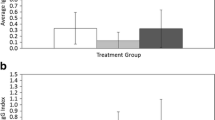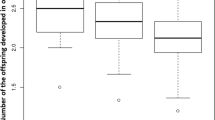Abstract
Parasites often exert strong selection pressures on their hosts that have evolved anti-parasite defences to counter the negative effects of parasites. We studied the relationship between intensity of parasitism, one aspect of host immune response, and host reproductive success, using the house martin bug Oeciacushirundinis and its house martin Delichonurbica host as a model system. Experimental manipulation of parasite load of nests during laying of the first clutch altered the intensity of parasitism. Parasites reduced the reproductive success of their hosts measured in terms of body condition and survival of nestlings. Host immune response, measured as the concentration of gammaglobulins and total plasma proteins, was positively associated with parasite reproduction, estimated as the number of juvenile parasites, but was only weakly related to the intensity of adult parasites. The concentration of gammaglobulins was negatively related to nestling body mass, implying a trade-off between immune function and body condition. Parasite reproduction thus exerts a cost on hosts by increasing the immune response.
Similar content being viewed by others
Author information
Authors and Affiliations
Additional information
Received: 25 August 1997 / Accepted: 3 November 1997
Rights and permissions
About this article
Cite this article
de Lope, F., Møller, A. & de la Cruz, C. Parasitism, immune response and reproductive success in the house martin Delichonurbica . Oecologia 114, 188–193 (1998). https://doi.org/10.1007/s004420050435
Issue Date:
DOI: https://doi.org/10.1007/s004420050435




